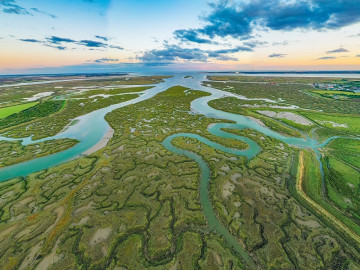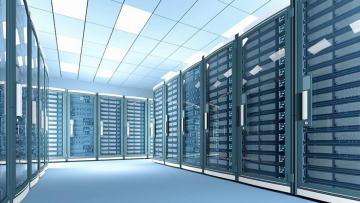Our modern lives depend on data. The management of that data is big business and has fueled exponential growth in the age of the average data center. But despite data moving to cloud-based storage models, such as Google data centers, their growth impacts the regional resources used to maintain data center operational conditions – namely, energy and water.
How can the energy-water nexus be managed to ensure optimized conditions at a data center and ensure the sustainable stewardship of our natural resources?
Data center owners are poised to become the next leaders in both energy and water efficiency by balancing resource use and addressing the (growing) reputational risk associated with running water-intensive facilities in water-stressed communities.
Data Usage Increase
Located around the globe, data centers pop up in response to regional demand, but maintaining them requires considerable amounts of water and energy for cooling systems. Between 2010 and 2018, data center computational load increased 550%. Driven by efficiency gains in data storage, kilowatt hour usage only increased by 6% in the same period. By 2020, data usage reached 64 zettabytes, largely due to the pandemic and the rise in remote work. Projections for global data usage are expected to exceed 180 zettabytes by 2025. It remains to be seen if improvements in data storage and energy efficiency can offset or at least balance the anticipated electricity demands of a 300% data usage increase.
Data Centers and the Water Scarcity Problem
Global attention on energy usage and greenhouse gas (GHG) emissions has been the major focus of data centers to date. Efforts to reduce electricity demand have relied heavily upon efficiency gains or changing cooling systems from air-cooled designs to evaporative cooling or water-based solutions. In fact, water cooling, especially in a cooling tower, is one of the best ways for data centers to reduce their emissions. However, unlike energy usage, water use efficiency and reporting are lagging throughout a business’ supply chain.
According to a recent Morningstar Sustainalytics report, only 16% of companies [of the 122 companies in subindustries that operate data centers] disclose information on their water risk management programs. Historically, water has been undervalued as a resource, largely due to its abundant availability and therefore low cost to acquire. With the increasing impacts of climate change on the planet’s water resources, there is a growing need to safely and sustainably manage this vitally important resource, specifically potable water in many areas.
According to the UN, half of the world’s population lives in a water-scarce area [at least one month of the year] and by 2050, water scarcity is projected to impact nearly 6 billion individuals. Climate change will reduce the availability and distribution of our freshwater resources; therefore, there is an increased need to be aware of water usage efficiency in data centers, as measured by Water Usage Effectiveness (WUE).
Roughly one-fifth of data centers draw over a million gallons of water from stressed watersheds. The heavy reliance upon water supplies in water-scarce basins exposes data centers to increased risks (physical, regulatory, and reputational), and highlights the role that data centers play in contributing to local water scarcity issues.
Why Data Centers Should Care about their Water Usage
Community awareness of water-related issues is also on the rise, culminating in heightened tension with data center operators. In 2017, community leaders, residents, and a conservation group in South Carolina pushed back against one data center’s request to increase withdrawal from a depleted aquifer usage by 37.5%. In response to the perceived reputational risk, the data center owner agreed to alternate water sourcing terms with the affected community. As climate change continues to impact regions, some governments are beginning to restrict new data center construction while planning regulations are drafted to address current and emerging water-scarcity issues. Pressure is mounting for data centers to commit to water conservation and efficiency measures equal to their energy efficiency and GHG emissions reduction commitments.
What to do Next
It’s important for data center owners to identify vulnerable areas in their operations. This issue has been languishing for years, but in this ever-changing landscape of regulatory, environmental, and social risks, the window of opportunity on being proactive is closing.
If you have more questions or don’t know where to start, contact Antea Group’s Water Stewardship and Facility Optimization teams today.
Water is a very local resource and requires local understanding of the environmental and cultural factors in that community. Our local associates through Inogen Alliance provide this on a global scale to support water management strategies fit for that environment. With the Alliance, you can leverage a global network of water experts, identify risk hotspots, and pinpoint efficiency and circularity opportunities for water and energy.
The time is now to get help with optimizing your data center operations to drive financial and resource security while maintaining a good energy production to cooling process ratio.
Want more news and insights like this?
Sign up for our monthly e-newsletter, The New Leaf. Our goal is to keep you updated, educated, and even a bit entertained as it relates to all things EHS and sustainability.
Have any questions?
Contact us to discuss your environment, health, safety, and sustainability needs today.









